After locating the start of the Advent season as the Sunday closest to Saint Andrew Feast Day on November 30th, let us now mention a few things about the length of the season. Upon the First Sunday of Advent to begin it all, the Advent season thereafter spans four Sundays and thus four weeks, though not always four full weeks, as the last week of Advent is usually truncated depending on the dating. Christmas is a fixed date of December 25th, regardless of day of the week. The First Sunday of Advent, however, is not a fixed date, but revolves around November 30th for Saint Andrew’s Feast Day. Therefore, the length of time that Advent comprises actually fluctuates from year to year. For example, the first Sunday of Advent could fall as early as November 27th, and then Advent has 28 days, or as late as December 3rd, giving the season only 22 days. We’re getting into a fourth week no matter what, but not always four full weeks.
Whatever the case may be, the deeper point is that Advent comprises four Sundays of the year, even if it doesn’t necessarily consist of four full weeks, depending on the dating. The traditional idea behind this being that the four weeks of Advent symbolize the four thousand years of darkness in which the world was mired before the coming of Christ – four weeks, each week symbolizing one thousand years to get to four thousand years. Four thousand years being the Hebrew and Vulgate chronology for the age of the world. Which, regardless of whether that’s actually the age of the world or not, the symbolism is that we await the coming of Christ, in a condensed period of time of four weeks, as mankind itself awaited the coming of Christ in history. Advent is effectively salvation history of the Old Testament in miniature. The spirit in which man awaited over the course of years, centuries, millenia being the same spirit in which we are to await, during Advent, the coming of Christ at Christmas.
With this symbolism of the length of the season in mind, it reinforces the point of what this liturgical season is all about. This is a marvelous time of expectation, anticipation, and preparation, but our culture today doesn’t live it as such. In reality, Advent is not what most people today treat it as: Advent is not the shopping season before Christmas or the time for Christmas parties or even the time for listening to Christmas music. Certainly it is a joyful time, but nonetheless a season that is primarily a penitential season (hence the purple Mass vestments during Advent) of preparation for the coming of Christ. Unfortunately, there is no Advent anymore today, so it seems, for in the popular culture, there is only the post-Thanksgiving shopping season, with family and office Christmas parties mixed in, which then all ends with a whimper on the night of December 25th. I think most people today, if you asked them, would tell you that the 12 days of Christmas are the days leading up to December 25th. But in fact, the 12 days of Christmas don’t actually start until December 25th! So everyone is ending the Christmas season when it’s really just beginning…precisely because they didn’t first have an Advent season! In fact, not only do the 12 days of Christmas not start until December 25th, but the Christmas season itself doesn’t really end until February 2nd, sincethat’s the feast of the Presentation of the Christ child in the Temple, which is the true end of the Christmas living because that’s what draws closure upon the infancy of Jesus Christ. How much more meaningful would our Christmas celebrations be (not to mention longer!) if we’ve spent the weeks leading up to Christmas in a penitential spirit.

